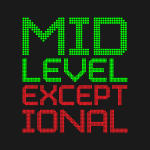The Value of a House on NBA Island
In a recent article at Grantland, Bill Simmons compared NBA franchises to beachfront property on an exclusive island, with space for only 30 glamorous houses. Unlike most assets, which one buys because of their ability to generate profit, the value of a sports franchise is primarily derived from its scarcity and the fact that very wealthy people find them fun to own (see Cuban, Mark). This is why Forbes valuations, which try to assess the value of sports franchises based on their underlying financials, consistently undershoot the teams’ sale prices.
Simmons argues that the owner-friendly 2011 collective bargaining agreement and the NBA’s growing international popularity have made franchises far more valuable over the past few years. I would add that the rapidly increasing value of TV broadcast rights also factors in, since sports are the rare TV property that everyone wants to watch live. Finally, the growing concentration of wealth has created more potential franchise buyers, with deeper pockets than ever.
Whatever the reasons, six NBA teams were sold in 2010 and 2011 for an average of $410 million, while more recent sales of the Sacramento Kings ($534 million) and the Milwaukee Bucks ($550 million) set records. It should be noted that the Kings and Bucks have very weak rosters, play in small markets, and have outdated arenas.
Steve Ballmer’s purchase of the Los Angeles Clippers for $2 billion underscores Simmons’ argument. Ballmer paid an eye-popping 15 times revenue ($128 million in 2013, according to Forbes) to own a team that, though an NBA laughingstock for most of its history, plays in the second-largest market and is a championship contender. Forbes had pegged the Clippers’ value at a mere $575 million.
However, I think Simmons goes a bit far when he says “…you can’t rationally assess the ‘value’ of anything when ego is involved.” Ultimately, there’s a limit on what even the most passionate ultra-wealthy NBA fan is willing to pay, and that limit is at least partially determined by the team’s ability to create revenue. Because of this, it’s possible in theory and in practice to model the value of NBA teams.
Aswath Damodaran, of the blog Musings on Markets, takes a stab at pricing the Clippers from a financial perspective. He discusses a few different measures of valuation, the most compelling of which (in my opinion) is based on the multiple of the team’s revenue. It’s a quick and dirty method, but is logical and easy to extend to other teams.
Nate Silver of FiveThirtyEight presents an alternate view. He found a correlation between the annualized rate of increase in a team’s Forbes valuation and the number of Fortune 400 billionaires in the team’s metro area, and used the coefficients to generate a range of estimated prices for each team. Though this method is inventive, the correlation exists because metro areas with more billionaires are also larger markets with more fans. It’s not as though billionaires only want to buy the team located in their city; Wesley Edens and his co-owner Marc Lasry are not from Milwaukee, nor do they intend to live there. Though Brooklyn has a heavy Russian population, Mikhail Prokhorov had no ties to the area before purchasing the Nets.
My valuation approach is thus based on Damodaran’s revenue multiplier methodology, but I use multiples that reflect the size of the team’s market, rather than just the average of recent sale prices. A big-market team with $200 million in revenue is worth more than twice a small-market team with $100 million in revenue. Consider the advantages that teams in major markets have:
- National media exposure: Marquee teams are frequently featured on national TV. This season, the Knicks, Lakers, Bulls, Clippers, and Nets played in nearly one-third of the nationally televised games, while 15 teams played five times or less (of which only two play in major markets.)
- Free agency: Glamorous cities can appeal to top free agents, many of whom aspire to celebrity status and seek to build a global brand. This helps explain why LeBron James took his talents to South Beach, rather than Sacramento. Rules capping maximum player contracts make it difficult for a small-market franchise to counteract this advantage.
- Prestige: Being the owner of a storied franchise in a major city, like the Lakers or Knicks, gives you a certain cache that doesn’t come with owning a team in a small city. When was the last time you saw Jack Nicholson or Jerry Seinfeld sit courtside at a Timberwolves game?
With this in mind, I came up with three tiers of revenue multiples: one range of multiples for small markets, one for medium-sized markets, and one for large markets. I approximate market size by the population of each team’s MSA.
The following range of estimates of each team’s value are based on these multiples and each team’s 2013 revenue:
The Clippers’ value comes out to somewhere between $960 million and $1.9 billion; there’s no way around the fact that Steve Ballmer paid a pretty penny for the team. But when you have $18 billion in your bank account, you probably don’t care about overpaying by at least $100 million. A few other interesting takeaways:
- The Lakers are the most valuable team in the NBA, with a median price of nearly $3 billion. The Knicks are right behind them at $2.9 billion. If they were sold at 15 times revenue, as the Clippers were, their sticker prices would exceed $4 billion.
- The Spurs are the most valuable small-market team ($670 million to $1 billion), while the Heat are the most valuable medium-market team ($940 million to $1.9 billion). Nike was right; winning does take care of everything.
- Fourteen teams have median estimated values of $1 billion or more.
- The Philadelphia 76ers are the cheapest big-market team, with their value ranging between $880 million and $1.75 billion. This is unsurprising, as their low revenue is linked to their unsightly performance over the past few seasons.
One caveat, here: this is far from the be-all, end-all valuation of sports franchises. A more thorough valuation methodology would include multiple years of team revenue, account for other relevant factors that are only loosely related to team revenue (quality of roster, age of stadium), and could have different definitions of market size and revenue multipliers. So if you’re a billionaire who’s dying for an NBA team, consult with a good investment banker and your lawyer before you plunk down $930 million for the Denver Nuggets.


